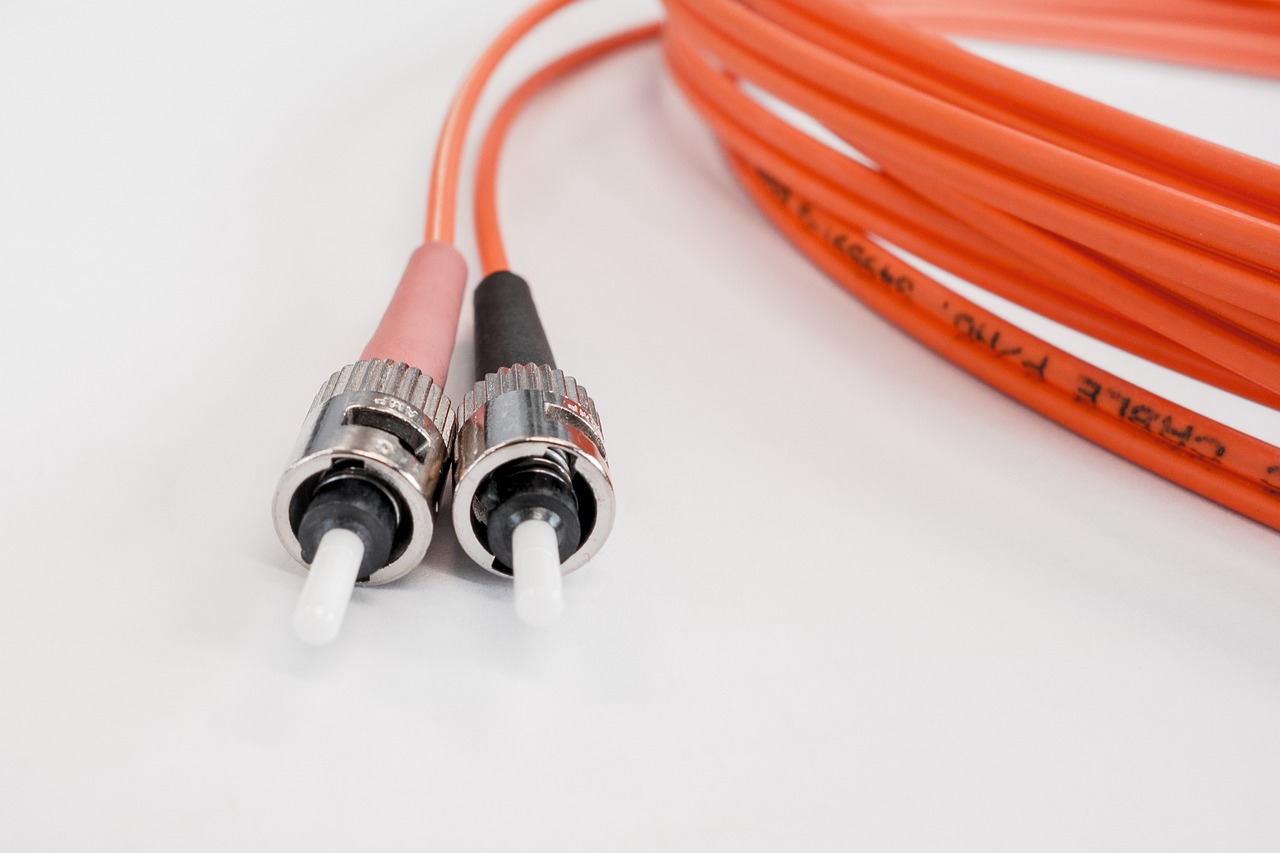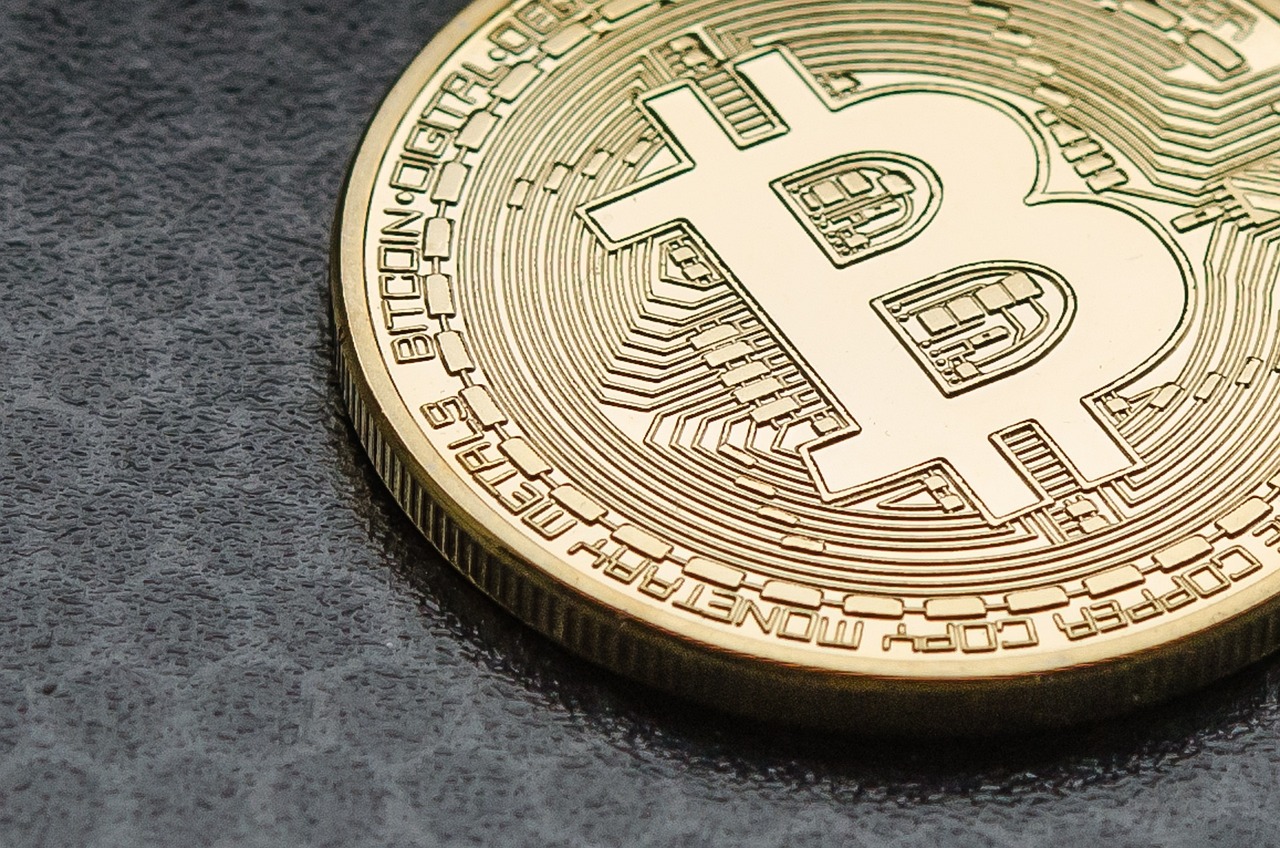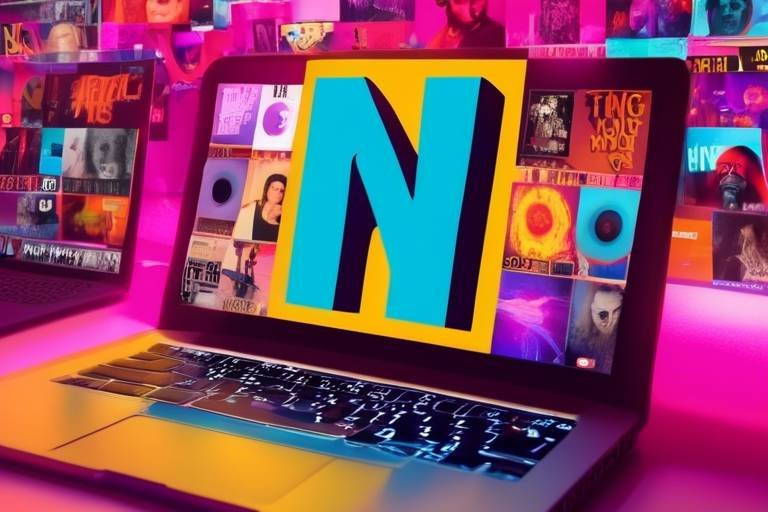Understanding the Benefits of Layer 2 Solutions
In the ever-evolving landscape of blockchain technology, the quest for efficiency and speed has led to the emergence of Layer 2 solutions. These innovative protocols are designed to operate on top of existing blockchains, effectively enhancing their performance without compromising security. Imagine a busy highway where cars are stuck in traffic; Layer 2 solutions act as a series of express lanes, allowing vehicles to bypass congestion and reach their destination faster. This article dives deep into the myriad advantages of these solutions, focusing on how they enhance scalability, reduce transaction costs, and ultimately improve the overall user experience within decentralized networks.
Layer 2 solutions can be thought of as a secondary framework built atop a primary blockchain. Their primary goal is to improve transaction speed and efficiency while ensuring that the security of the underlying blockchain remains intact. Think of it as adding a new layer to a cake—each layer enhances the flavor and texture without altering the core recipe. By processing transactions off-chain, these solutions alleviate pressure on the main blockchain, allowing it to function more smoothly. This off-chain processing is crucial for applications that require quick transactions, such as financial services and gaming platforms.
One of the standout benefits of Layer 2 solutions is their ability to significantly enhance scalability. By allowing a greater number of transactions to be processed off-chain, Layer 2 solutions alleviate congestion on the main blockchain. This leads to faster transaction times and a more seamless user experience. For instance, during peak times, traditional blockchains can become sluggish, leading to delays and frustration for users. Layer 2 solutions effectively tackle this issue, ensuring that transactions can be completed quickly and efficiently.
There are several types of Layer 2 solutions, each offering unique advantages for scaling blockchains while ensuring security and interoperability. Understanding these types can help users and developers choose the right solution for their needs. Here are some of the most prominent types:
- State Channels: These allow participants to conduct numerous off-chain transactions, only settling the final result on the blockchain. This reduces fees and increases speed, making it ideal for microtransactions.
- Sidechains: These are separate blockchains that run in parallel to the main blockchain, allowing for asset transfers between them. They can be customized for specific applications without affecting the main network.
- Rollups: Rollups bundle multiple transactions into a single one, minimizing data storage on-chain and significantly lowering costs while maintaining security through cryptographic proofs.
State channels are a fascinating innovation within Layer 2 solutions. They enable participants to engage in numerous off-chain transactions while only recording the final outcome on the blockchain. This approach drastically reduces transaction fees and enhances speed, making it particularly appealing for applications that require frequent interactions, such as gaming or micropayments. By limiting the number of transactions that need to be processed on-chain, state channels help keep the blockchain uncluttered and efficient.
Another compelling Layer 2 solution is rollups, which bundle multiple transactions into a single transaction. This not only minimizes the data that needs to be stored on-chain but also significantly lowers costs. Rollups maintain security through cryptographic proofs, ensuring that the integrity of transactions is upheld. This method is particularly beneficial for high-volume applications, where transaction costs can otherwise spiral out of control. By leveraging rollups, developers can create applications that are both cost-effective and scalable.
One of the most attractive aspects of Layer 2 solutions is their potential for cost reduction. By processing transactions off-chain, these solutions can drastically lower transaction fees, making blockchain technology more accessible and affordable for users and developers alike. Imagine being able to send money across the globe for just a fraction of a cent, rather than incurring hefty fees associated with traditional banking systems. This cost-effectiveness opens the door for broader adoption of blockchain technology across various sectors, from finance to supply chain management.
Layer 2 solutions significantly improve user experience by providing faster transaction confirmations and reducing waiting times. This is particularly crucial for applications that require real-time interactions, such as gaming and finance. In a world where instant gratification is the norm, users expect their transactions to be processed without delay. The enhanced speed and efficiency offered by Layer 2 solutions cater to this demand, creating a more satisfying user experience.
The versatility of Layer 2 solutions is evident in their real-world applications across various sectors. From finance to gaming and supply chain management, these solutions are transforming traditional processes. For instance:
- Finance: Layer 2 solutions enable faster and cheaper transactions, making them ideal for remittances and trading.
- Gaming: Players can enjoy seamless in-game transactions without the lag associated with traditional blockchains.
- Supply Chain: Enhanced tracking and transaction speed improve efficiency and transparency in supply chains.
While Layer 2 solutions offer numerous benefits, it's essential to consider the security implications. Off-chain transactions may introduce new vulnerabilities that need to be addressed. Developers must ensure robust security measures are in place to protect users and their assets. This includes implementing proper validation techniques and safeguarding against potential fraud. As with any technology, balancing innovation with security is crucial to maintaining user trust.
The future of Layer 2 solutions looks promising, with ongoing developments aimed at enhancing their scalability, security, and usability. As blockchain technology continues to evolve, these solutions will play a pivotal role in driving broader adoption. The potential for Layer 2 solutions to revolutionize industries is immense, and as more developers explore their capabilities, we can expect to see innovative applications emerge that harness the full power of blockchain technology.
Q1: What are Layer 2 solutions?
Layer 2 solutions are protocols built on top of existing blockchains to improve transaction speed and efficiency while maintaining security.
Q2: How do Layer 2 solutions enhance scalability?
They allow more transactions to be processed off-chain, reducing congestion on the main blockchain and enabling faster transaction times.
Q3: What are some examples of Layer 2 solutions?
Examples include state channels, sidechains, and rollups, each offering different methods for scaling blockchains.
Q4: Are there any security risks associated with Layer 2 solutions?
Yes, off-chain transactions may introduce new vulnerabilities, so it's crucial to implement robust security measures.
Q5: What is the future outlook for Layer 2 solutions?
The future looks bright, with ongoing developments aimed at enhancing scalability, security, and usability, driving broader adoption of blockchain technology.

What Are Layer 2 Solutions?
Layer 2 solutions are like the turbochargers of the blockchain world. Imagine a busy highway where cars are stuck in traffic; that’s what happens on a congested blockchain. Layer 2 solutions are the express lanes that allow transactions to move faster and more efficiently without compromising the security of the main blockchain. They are protocols built on top of existing blockchains, designed specifically to enhance transaction speed and efficiency. By offloading some of the transaction processing from the main chain, these solutions can handle a higher volume of transactions, making the entire network more robust.
To understand Layer 2 solutions better, think of them as an additional layer of functionality that sits above the base layer of a blockchain. The base layer, or Layer 1, is where the core security and consensus mechanisms operate. Layer 2 solutions interact with this base layer to provide enhanced capabilities. Some common examples include state channels, rollups, and sidechains, each offering unique mechanisms for improving transaction throughput and reducing costs.
One of the most appealing aspects of Layer 2 solutions is their ability to maintain the decentralized nature of blockchain technology. They do this by ensuring that the final results of off-chain transactions are still recorded on the main chain, preserving transparency and security. For instance, when you use a state channel, you can conduct numerous transactions off-chain, and only the final outcome is settled on the blockchain. This drastically reduces the number of transactions that need to be processed on the main chain, alleviating congestion and lowering fees.
In summary, Layer 2 solutions are innovative technologies that enable blockchains to scale without sacrificing their security. They allow for faster, cheaper, and more efficient transactions, which is essential for the growing demand for blockchain applications. As the world continues to embrace decentralized technologies, understanding Layer 2 solutions becomes increasingly important for developers and users alike.

Scalability Improvements
Layer 2 solutions are game changers in the world of blockchain technology, especially when it comes to . Imagine trying to get through a crowded subway station during rush hour; it’s chaotic, slow, and frustrating. Now, think of Layer 2 solutions as the express trains that bypass all that congestion, allowing for a smoother, faster journey. By enabling more transactions to be processed off-chain, these solutions significantly alleviate the bottlenecks that often plague main blockchains.
When we talk about scalability, we are essentially discussing the ability of a blockchain to handle an increasing number of transactions without sacrificing speed or efficiency. Traditional blockchains, like Bitcoin and Ethereum, can only process a limited number of transactions per second. This limitation can lead to long wait times and high fees, especially during peak usage periods. Layer 2 solutions step in to bridge this gap, allowing for a much higher throughput of transactions.
To grasp how this works, let's break it down into a few key benefits:
- Increased Transaction Speed: By processing transactions off the main blockchain, Layer 2 solutions can achieve significantly faster confirmation times. This is particularly crucial for applications that require real-time interactions.
- Reduced Congestion: With more transactions being handled off-chain, the main blockchain experiences less congestion, leading to a more efficient network overall.
- Enhanced User Experience: Users enjoy quicker transactions and lower fees, making blockchain technology more appealing to a broader audience.
One of the standout features of Layer 2 solutions is their ability to bundle transactions. For instance, rollups can take hundreds or thousands of transactions and combine them into a single batch that is then submitted to the main blockchain. This not only reduces the amount of data that needs to be processed on-chain but also minimizes the associated costs. Think of it as a carpooling system for transactions—why send each individual car (transaction) when you can send one larger vehicle (batch) that carries multiple passengers (transactions)?
In summary, Layer 2 solutions offer a robust framework for enhancing scalability in blockchain networks. By processing transactions off-chain and employing innovative techniques like bundling, they pave the way for a more efficient, cost-effective, and user-friendly blockchain experience. As more projects begin to adopt these solutions, we can expect to see a significant transformation in how decentralized networks operate, making them not just faster, but also more accessible to everyone.

Types of Layer 2 Solutions
Layer 2 solutions have emerged as a game-changer in the blockchain ecosystem, offering various methods to enhance scalability and efficiency. These solutions are designed to operate on top of existing blockchains, allowing for faster transactions without compromising on security. Let’s dive deeper into the different types of Layer 2 solutions that are currently making waves in the crypto space.
One of the most popular types of Layer 2 solutions is state channels. Imagine a private conversation between two friends who want to exchange messages without anyone else listening in. State channels allow two parties to conduct multiple transactions off-chain, only recording the final result on the blockchain. This method not only reduces congestion on the main blockchain but also minimizes transaction fees, making it a highly efficient option for microtransactions and frequent interactions.
Another fascinating approach is rollups. Think of rollups as a bus that picks up multiple passengers (transactions) and drops them off at a single destination (the blockchain). Rollups bundle numerous transactions into one, significantly reducing the amount of data that needs to be stored on-chain. They achieve this while maintaining security through cryptographic proofs, ensuring that all transactions are valid and trustworthy. This method is particularly beneficial for applications that require high throughput, like decentralized finance (DeFi) platforms.
We also have sidechains, which can be likened to a parallel universe of the main blockchain. A sidechain operates independently but is still connected to the main chain, allowing assets to be transferred between the two. This enables developers to experiment with new features and functionalities without affecting the main blockchain's performance. Sidechains can be tailored for specific use cases, making them versatile tools for various blockchain applications.
In summary, the landscape of Layer 2 solutions is diverse and continually evolving. Each type—state channels, rollups, and sidechains—offers unique advantages that cater to different needs within the blockchain ecosystem. As developers continue to innovate, we can expect even more sophisticated solutions to emerge, further enhancing the capabilities of blockchain technology.
- What are Layer 2 solutions? Layer 2 solutions are protocols built on top of existing blockchains to improve transaction speed and efficiency.
- How do state channels work? State channels allow two parties to conduct numerous off-chain transactions, only settling the final result on the blockchain.
- What are rollups? Rollups bundle multiple transactions into a single one, reducing data storage on-chain while maintaining security.
- Are Layer 2 solutions secure? While they offer many benefits, Layer 2 solutions can introduce new vulnerabilities that need to be carefully managed.
- What is the future of Layer 2 solutions? The future looks promising, with ongoing developments aimed at enhancing scalability, security, and usability.

State Channels
State channels are an innovative solution designed to facilitate off-chain transactions while maintaining the security and integrity of the underlying blockchain. Imagine a bustling highway where traffic is constantly congested; state channels act like express lanes that allow certain vehicles to bypass the usual gridlock. In this analogy, the vehicles represent transactions, and the express lanes symbolize state channels. They enable participants to engage in numerous transactions without the need to record each one on the blockchain immediately.
When using state channels, parties involved can conduct multiple transactions privately and only settle the final outcome on the main blockchain. This process significantly reduces the number of transactions that need to be processed on-chain, alleviating congestion and enhancing overall efficiency. For instance, two users can trade tokens back and forth as many times as they wish without incurring fees for each transaction. Only when they decide to close the channel do they submit the final balance to the blockchain, which minimizes costs and speeds up the process.
Here’s a quick breakdown of how state channels work:
- Opening the Channel: The participants create a multi-signature wallet and deposit funds into it, which serves as collateral.
- Conducting Transactions: They can now exchange value off-chain by signing transactions that update the state of their balance in the channel.
- Closing the Channel: Once the participants are done transacting, they submit the final state to the blockchain, which reflects their net balance.
This mechanism not only enhances speed but also significantly reduces transaction fees, making it an attractive option for applications that require high-frequency interactions, such as gaming or microtransactions. Moreover, the security of state channels is bolstered by the fact that they still rely on the main blockchain for final settlement, ensuring that the integrity of the transactions is preserved.
However, while state channels offer remarkable benefits, they do come with some limitations. For example, they require participants to be online and engaged during the transaction process. If one party goes offline, it can complicate the closure of the channel. Nevertheless, the advantages they offer in terms of speed and cost efficiency make them a compelling choice for many decentralized applications.
In summary, state channels represent a significant leap forward in blockchain technology, providing a mechanism for rapid and cost-effective transactions while maintaining the necessary security guarantees. As more developers and users become aware of their potential, we can expect to see increased adoption and innovation in this area.
Q: What are state channels?
A: State channels are off-chain solutions that allow participants to conduct multiple transactions privately and only settle the final result on the main blockchain, reducing congestion and fees.
Q: How do state channels improve transaction speed?
A: By conducting transactions off-chain, state channels eliminate the need for each transaction to be processed on the blockchain, allowing for faster confirmations and reduced waiting times.
Q: Are state channels secure?
A: Yes, state channels maintain security by relying on the main blockchain for final settlement, ensuring that all transactions are verified and recorded securely.
Q: What are the limitations of state channels?
A: One limitation is that participants need to be online for the duration of the transactions. If one party goes offline, it can complicate the process of closing the channel.

Rollups
Rollups are a fascinating and innovative solution in the realm of blockchain technology, designed to tackle some of the most pressing issues faced by traditional blockchains, such as scalability and high transaction costs. In essence, rollups allow multiple transactions to be bundled together and processed as a single transaction on the main blockchain, which not only reduces the amount of data that needs to be stored on-chain but also significantly enhances transaction throughput. Imagine a busy highway where traffic is flowing smoothly because several cars are traveling in a single lane instead of each car taking its own path; this is the efficiency that rollups bring to blockchain networks.
There are two primary types of rollups: Optimistic Rollups and ZK-Rollups. Each type employs a different mechanism for ensuring the validity of transactions while maintaining security. Optimistic Rollups operate on the assumption that all transactions are valid and only check for fraud when a challenge is raised. This approach allows for faster processing times, but it does come with a degree of risk. On the other hand, ZK-Rollups use cryptographic proofs to verify transactions, ensuring that all bundled transactions are legitimate before they are recorded on the blockchain. This method offers a higher level of security but can be more complex to implement.
One of the standout features of rollups is their ability to drastically lower transaction fees. By consolidating multiple transactions into one, the cost per transaction decreases, making blockchain technology much more accessible to users and developers alike. For instance, consider the following comparison of transaction fees:
| Transaction Type | Average Fee |
|---|---|
| Standard On-Chain Transaction | $2.50 |
| Rollup Transaction | $0.10 |
This table clearly illustrates how rollups can make transactions not only faster but also significantly cheaper. Furthermore, rollups help to alleviate congestion on the main blockchain, which is particularly beneficial during peak usage times. When the demand for transactions surges, rollups can absorb the excess traffic, ensuring that users experience minimal delays.
Moreover, the implementation of rollups does not compromise the security of the underlying blockchain. By leveraging the existing security protocols of the main chain, rollups can provide a robust framework for executing transactions. This dual-layer approach allows developers to build decentralized applications (dApps) that can handle a high volume of transactions without sacrificing security or reliability.
In summary, rollups represent a significant advancement in blockchain technology, offering a blend of speed, cost-effectiveness, and security. As more developers and businesses recognize the advantages of rollups, we can expect to see an increase in their adoption across various sectors, paving the way for a more scalable and efficient blockchain ecosystem.

Cost Reduction
One of the most compelling advantages of Layer 2 solutions is their ability to drastically reduce transaction fees. In the world of blockchain, where every transaction can incur costs that add up quickly, this benefit is nothing short of revolutionary. By processing transactions off-chain, Layer 2 solutions alleviate the burden on the main blockchain, allowing users to enjoy lower fees and a more efficient experience.
Imagine you're at a crowded concert, and everyone is trying to get a drink. The long lines and high prices can be frustrating. Now, picture a separate bar set up just for concert-goers, where drinks are cheaper and served faster. This is similar to what Layer 2 solutions do for blockchain transactions. They create a more efficient environment where users can interact without the congestion and high costs associated with the main chain.
To further illustrate the impact of cost reduction, let's take a look at a comparison of transaction fees across different blockchain solutions:
| Blockchain Solution | Average Transaction Fee | Layer 2 Fee Reduction |
|---|---|---|
| Ethereum Mainnet | $5 - $50 | 70% - 90% |
| Bitcoin Mainnet | $2 - $30 | 60% - 80% |
| Layer 2 (e.g., Lightning Network) | $0.01 - $0.10 | N/A |
As you can see from the table, Layer 2 solutions can reduce transaction fees by a staggering percentage compared to their mainnet counterparts. This reduction not only makes blockchain technology more accessible to everyday users but also encourages developers to build applications that leverage these cost-effective solutions. The more affordable the transactions, the more likely users are to engage with decentralized applications (dApps), creating a vibrant ecosystem.
Furthermore, the lower costs associated with Layer 2 solutions can open up new avenues for innovation. Developers can experiment with new ideas without the fear of incurring prohibitive costs. This creates a fertile ground for creativity, leading to a plethora of applications that can benefit from the enhanced scalability and reduced fees.
In summary, Layer 2 solutions are not just about improving transaction speed; they are equally focused on making blockchain technology affordable and accessible. As we continue to see advancements in this area, the overall landscape of blockchain will likely shift, making it a more inviting space for users and developers alike.
- What are Layer 2 solutions? Layer 2 solutions are protocols built on top of existing blockchains to enhance transaction speed and efficiency.
- How do Layer 2 solutions reduce costs? By processing transactions off-chain, they alleviate congestion on the main blockchain, resulting in lower fees.
- Are Layer 2 solutions secure? While they offer many benefits, security considerations must be taken into account as off-chain transactions may introduce vulnerabilities.
- Can Layer 2 solutions be used in various sectors? Yes, they are being implemented in finance, gaming, and supply chain management, showcasing their versatility.

Enhanced User Experience
In today's fast-paced digital world, user experience is everything. When it comes to blockchain technology, Layer 2 solutions are revolutionizing how users interact with decentralized networks. Imagine waiting in a long line at a coffee shop; it can be frustrating, right? Now, picture a scenario where you can skip the line and get your coffee instantly. That's what Layer 2 solutions do for blockchain transactions—they streamline the process and make it faster and more efficient.
One of the most significant advantages of Layer 2 solutions is the reduction in transaction confirmation times. Traditional blockchain networks can experience delays during peak usage times, leading to a sluggish user experience. With Layer 2, transactions are processed off-chain, which means users can enjoy near-instant confirmations. This is especially crucial for applications that require real-time interactions, such as online gaming and financial trading platforms, where every second counts.
Furthermore, Layer 2 solutions can significantly lower transaction fees. Think of it like a crowded highway during rush hour—traffic is slow, and fuel costs skyrocket. By using Layer 2, users can avoid the congestion of the main blockchain, resulting in lower fees and a smoother transaction experience. This accessibility opens the door for more users and developers to engage with blockchain technology without the burden of high costs.
In addition to speed and cost, Layer 2 solutions enhance user experience through improved scalability. With more transactions being processed off-chain, the main blockchain can operate more efficiently, which ultimately leads to a more stable network. Users can expect less downtime and fewer disruptions, making their interactions seamless and enjoyable. This is akin to upgrading from a dial-up internet connection to high-speed broadband—everything just works better!
Moreover, the implementation of Layer 2 solutions creates opportunities for innovative applications that can cater to diverse user needs. For example, in the gaming sector, developers can create immersive experiences without worrying about lag or high fees. Similarly, in finance, users can execute trades quickly and inexpensively, enhancing their overall engagement with the platform.
To sum it up, Layer 2 solutions are not just a technological advancement; they are a game-changer for user experience in the blockchain ecosystem. By providing faster transactions, lower fees, and enhanced scalability, they create a more inviting environment for users and developers alike. As we continue to embrace these innovations, the future of blockchain technology looks brighter and more user-friendly than ever.
- What are Layer 2 solutions? Layer 2 solutions are protocols built on top of existing blockchains to enhance transaction speed and reduce costs.
- How do Layer 2 solutions improve user experience? By providing faster transaction confirmations, reducing fees, and increasing overall network efficiency.
- Can Layer 2 solutions be used in different sectors? Yes, they are applicable in various sectors, including finance, gaming, and supply chain management.
- Are there any security concerns with Layer 2 solutions? While they offer many benefits, off-chain transactions may introduce new vulnerabilities that need to be managed.

Real-World Applications
Layer 2 solutions are not just theoretical constructs; they are actively reshaping various industries by providing viable solutions to real-world challenges. Imagine a bustling city where traffic is a nightmare. Just like adding extra lanes to ease congestion, Layer 2 technologies are designed to alleviate the bottlenecks in blockchain networks. Their versatility means they can be applied in several sectors, each benefiting uniquely from the enhancements they offer.
One of the most prominent applications of Layer 2 solutions is in the financial sector. With the rise of decentralized finance (DeFi), users demand quick, low-cost transactions. Layer 2 solutions, such as rollups and state channels, facilitate seamless transactions that can handle a high volume of users without the delays typically associated with on-chain transactions. This allows for real-time trading, lending, and borrowing, creating a more dynamic financial ecosystem.
In the gaming industry, where user engagement is key, Layer 2 solutions enhance the player experience by allowing for instant transactions. Imagine playing a multiplayer game where you can buy, sell, or trade in-game assets without waiting for lengthy confirmations. This not only keeps players engaged but also opens up new economic models for game developers, who can leverage the speed and efficiency of Layer 2 to create innovative gameplay experiences.
Moreover, Layer 2 solutions are making waves in supply chain management. By utilizing these technologies, companies can track products in real-time, ensuring transparency and efficiency. For instance, a company can use state channels to update the status of a shipment without incurring high fees or delays. This is akin to having a live GPS tracking system for your package, where every update is instant and cost-effective.
In summary, the real-world applications of Layer 2 solutions are vast and varied. They not only improve efficiency and reduce costs but also pave the way for new business models and user experiences. As these technologies continue to evolve, we can expect them to play an even more significant role in transforming traditional processes across different sectors.
- What are Layer 2 solutions? Layer 2 solutions are protocols built on top of existing blockchains to improve transaction speed and efficiency.
- How do Layer 2 solutions enhance scalability? They allow more transactions to be processed off-chain, reducing congestion and enabling faster transaction times.
- What are some examples of Layer 2 solutions? Examples include state channels, sidechains, and rollups, each providing unique methods for scaling blockchains.
- Are Layer 2 solutions secure? While they improve efficiency, they may introduce new vulnerabilities that need to be carefully managed.
- What industries are benefiting from Layer 2 solutions? Industries such as finance, gaming, and supply chain management are seeing significant improvements through the use of Layer 2 technologies.

Security Considerations
When diving into the world of Layer 2 solutions, it’s crucial to keep an eye on the security implications that come along with these innovations. While they offer remarkable benefits such as improved scalability and reduced transaction costs, the shift to off-chain transactions can introduce a range of new vulnerabilities. Think of Layer 2 solutions as a bustling city: on the surface, everything seems lively and efficient, but if you dig a little deeper, you might uncover some hidden risks lurking beneath the surface.
One of the primary concerns with Layer 2 solutions is the potential for fraud and manipulation. Since transactions occur off the main blockchain, they may not benefit from the same level of scrutiny and verification that on-chain transactions receive. For instance, if a malicious actor gains control over a state channel, they could potentially manipulate transaction outcomes before finalizing them on the main chain. This highlights the importance of robust protocols and security measures to mitigate such risks.
Another point to consider is the centralization risk that some Layer 2 solutions may introduce. While decentralization is a core principle of blockchain technology, certain Layer 2 implementations might rely on a limited number of validators or operators. This creates a scenario where a small group holds significant power over the transaction process, which can lead to security vulnerabilities and a potential breach of trust within the network.
Moreover, the complexity of Layer 2 solutions can also pose security challenges. As developers create more intricate systems to enhance performance, the likelihood of bugs and vulnerabilities increases. This is particularly concerning in the context of smart contracts, which, if not properly audited, can be exploited by malicious actors. Therefore, thorough testing and auditing are essential before deploying any Layer 2 solution.
To give you a clearer picture, here's a table summarizing the key security considerations associated with Layer 2 solutions:
| Security Concern | Description |
|---|---|
| Fraud and Manipulation | Off-chain transactions may lack the same level of verification, leading to potential manipulation. |
| Centralization Risk | Reliance on a limited number of validators can compromise the decentralization of the network. |
| Complexity and Bugs | Increased complexity can lead to vulnerabilities and bugs in the system, especially in smart contracts. |
In conclusion, while Layer 2 solutions offer exciting advancements in the blockchain space, it’s vital to approach them with a critical mindset. Understanding the security implications and actively working to address them will not only enhance the reliability of these solutions but also foster greater trust among users. As the technology evolves, ongoing vigilance will be necessary to ensure that the benefits of Layer 2 solutions are not overshadowed by potential risks.
- What are Layer 2 solutions? Layer 2 solutions are protocols built on top of existing blockchains to enhance transaction speed and efficiency.
- Are Layer 2 solutions secure? While they offer benefits, security considerations such as fraud risks and centralization must be addressed.
- How do Layer 2 solutions improve scalability? They allow for off-chain transactions, reducing congestion on the main blockchain and enabling faster processing.
- What types of Layer 2 solutions exist? Common types include state channels, sidechains, and rollups, each with different approaches to scaling.

Future of Layer 2 Solutions
The is incredibly exciting, with a myriad of developments on the horizon that promise to enhance scalability, security, and usability. As the demand for blockchain technology continues to surge across various industries, the need for efficient and effective solutions becomes more pressing. Layer 2 solutions are stepping up to the plate, offering innovative ways to tackle the challenges faced by traditional blockchain systems.
One of the key areas of focus is the integration of artificial intelligence and machine learning into Layer 2 protocols. Imagine a world where these technologies can optimize transaction routing, predict congestion, and enhance security measures in real-time. This synergy could lead to a more resilient and adaptive blockchain ecosystem, capable of handling millions of transactions seamlessly.
Moreover, the ongoing development of interoperability protocols is set to revolutionize how different Layer 2 solutions communicate with each other. This means that users could potentially move assets across various platforms without friction, creating an interconnected web of decentralized applications (dApps). Such advancements would not only streamline user experiences but also foster a collaborative environment among different blockchain networks.
Another crucial aspect of the future is the emphasis on sustainability. As environmental concerns grow, Layer 2 solutions are being designed with energy efficiency in mind. By minimizing the energy consumption associated with transactions, these innovations could pave the way for a greener blockchain landscape, appealing to eco-conscious users and investors alike.
In addition to these advancements, the regulatory landscape will play a pivotal role in shaping the future of Layer 2 solutions. As governments and regulatory bodies begin to establish clearer guidelines for blockchain technology, Layer 2 solutions that prioritize compliance and security will likely gain a competitive edge. This could lead to increased adoption among mainstream businesses that are currently hesitant to embrace blockchain due to regulatory uncertainties.
To summarize, the future of Layer 2 solutions is bright and full of potential. With advancements in technology, a focus on sustainability, and a proactive approach to regulatory compliance, we can expect to see these solutions transform the blockchain landscape. As we look ahead, it’s clear that Layer 2 solutions will not only enhance the current state of blockchain technology but also unlock new possibilities for innovation and growth.
- What are Layer 2 solutions? Layer 2 solutions are protocols built on top of existing blockchains to improve transaction speed and efficiency while maintaining security.
- How do Layer 2 solutions enhance scalability? They allow for more transactions to be processed off-chain, reducing congestion on the main blockchain and enabling faster transaction times.
- What are some examples of Layer 2 solutions? Examples include state channels, sidechains, and rollups, each offering unique methods for scaling blockchains.
- Are Layer 2 solutions secure? While they offer many benefits, security considerations are crucial since off-chain transactions may introduce new vulnerabilities.
Frequently Asked Questions
- What are Layer 2 solutions in blockchain?
Layer 2 solutions are protocols built on top of existing blockchains. They aim to enhance transaction speed and efficiency while ensuring the security of the base blockchain. Think of it like adding an express lane to a busy highway, allowing for faster travel without compromising the main road's integrity.
- How do Layer 2 solutions improve scalability?
By processing transactions off-chain, Layer 2 solutions significantly reduce congestion on the main blockchain. This allows for a higher volume of transactions to be handled simultaneously, akin to a multi-lane highway where more cars can travel at once, leading to quicker transaction times.
- What types of Layer 2 solutions exist?
There are several types of Layer 2 solutions, including state channels, sidechains, and rollups. Each offers unique methods for scaling blockchains while ensuring security and interoperability. It's like having different tools in a toolbox, each suited for a specific task.
- What are state channels?
State channels allow users to conduct multiple off-chain transactions and only settle the final result on the blockchain. This method reduces fees and enhances speed, making it perfect for scenarios that require frequent interactions, like gaming or microtransactions.
- Can Layer 2 solutions reduce transaction costs?
Absolutely! By moving transactions off-chain, Layer 2 solutions can significantly lower transaction fees. This makes blockchain technology more accessible and cost-effective for both users and developers, similar to finding a discount on your favorite items.
- How do Layer 2 solutions enhance user experience?
They provide faster transaction confirmations and reduce waiting times, which is critical for applications that demand real-time interactions. Imagine waiting in line at a coffee shop; a quicker service means you can enjoy your coffee sooner!
- What are some real-world applications of Layer 2 solutions?
Layer 2 solutions are being used in various sectors, including finance, gaming, and supply chain management. Their versatility showcases their potential to revamp traditional processes, much like how online shopping transformed retail.
- Are there security concerns with Layer 2 solutions?
Yes, while they offer many benefits, off-chain transactions can introduce new vulnerabilities. It's essential to address these security implications to ensure the safety of transactions, just like securing your home against potential intruders.
- What does the future hold for Layer 2 solutions?
The future looks bright! Ongoing developments aim to enhance their scalability, security, and usability, which will drive broader adoption of blockchain technology. It's like watching a promising startup grow into a major player in the industry.



















